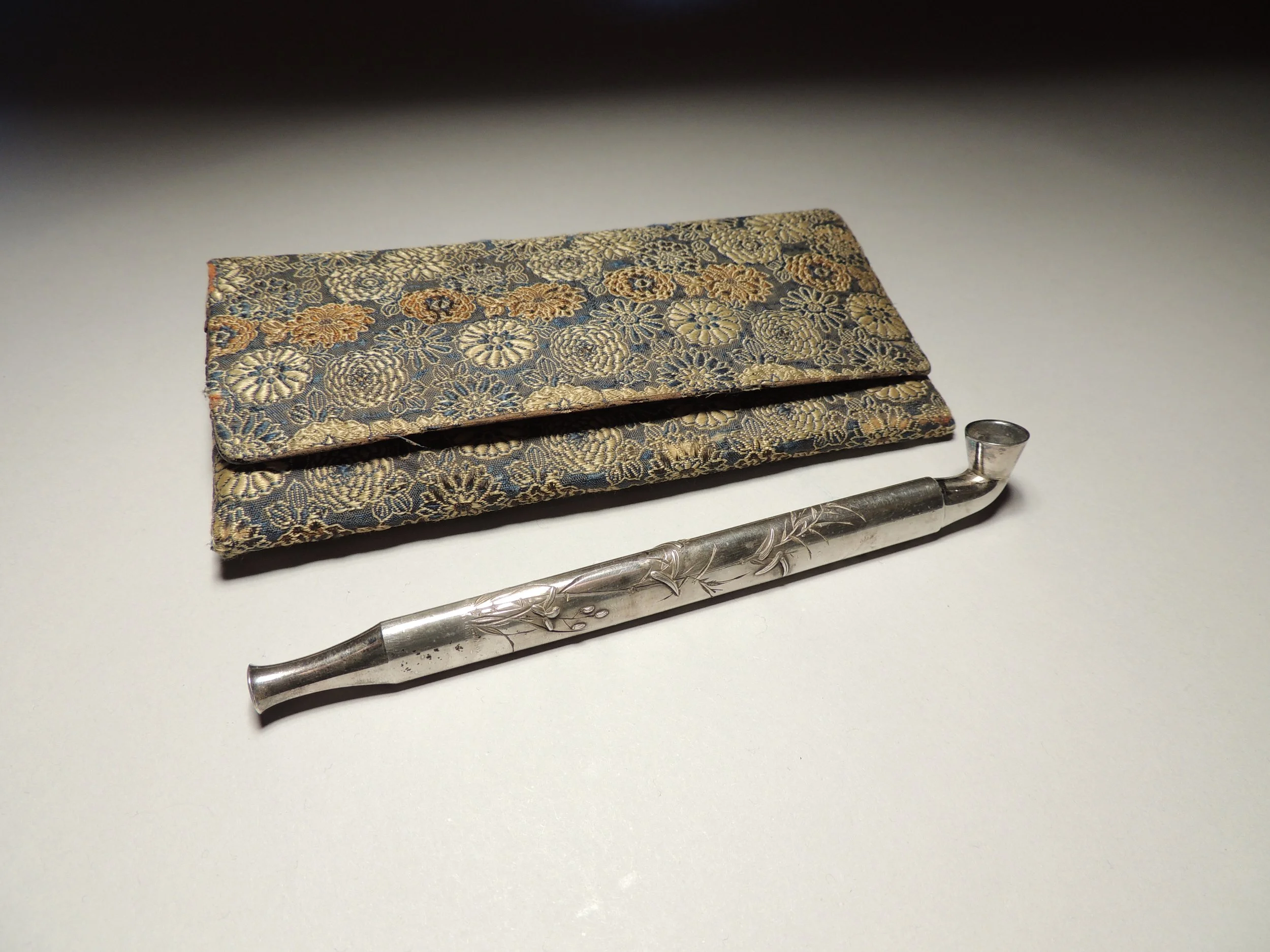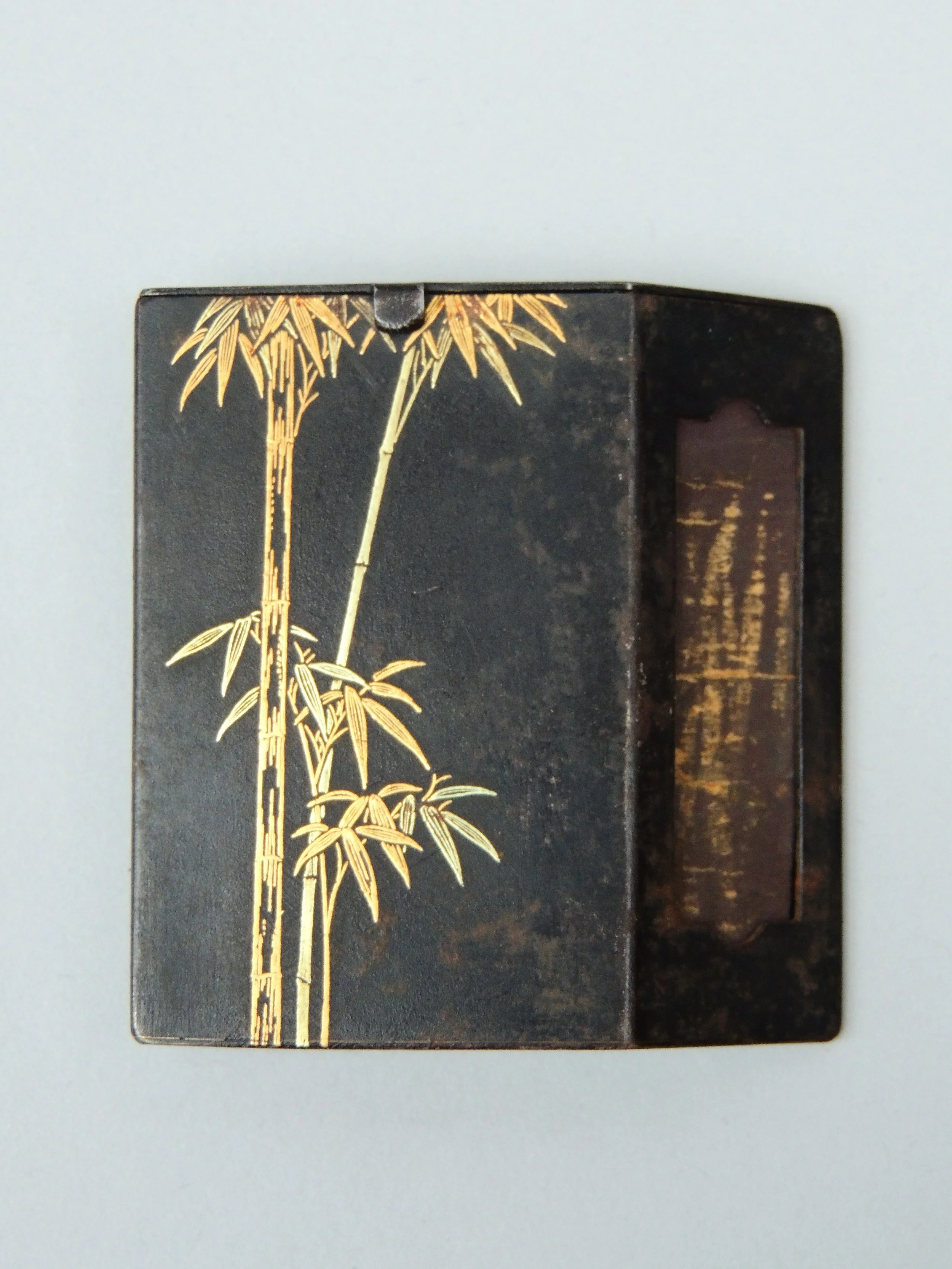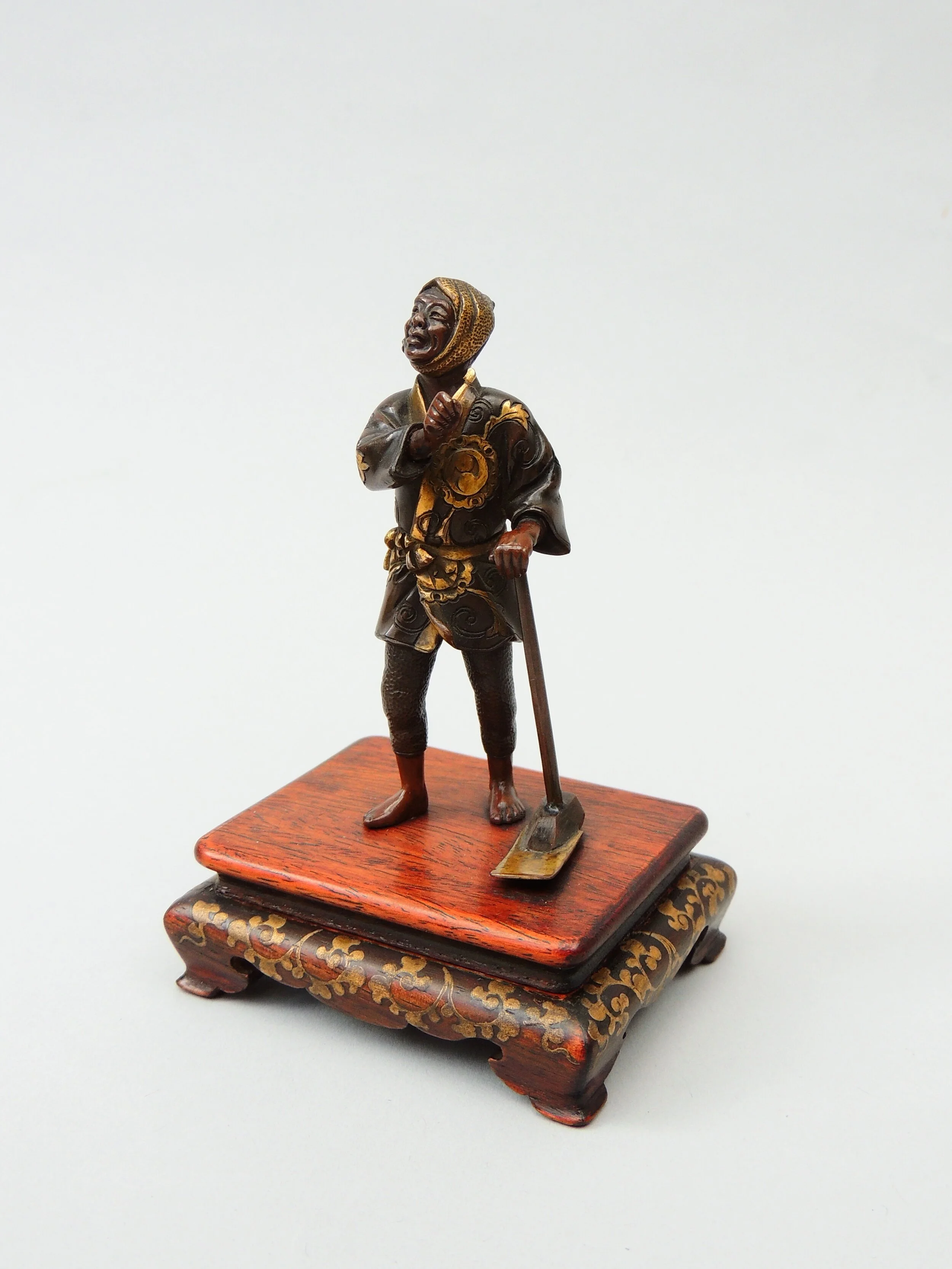Anonymous
Meiji period, 19/20th century
1868-1912
Koro
A Large bronze and mixed metal koro with dragons in clouds surrounded by geometrical patterns. Five shishi head feet support the bowl with a lid depicting the futaba-aoi plant that is also used as the finial where three leaves and an unattached ball. The use of hirazogan and iroe takazogan is used over the koro with a variety of metals.
Unsigned
195mm x 190mm








